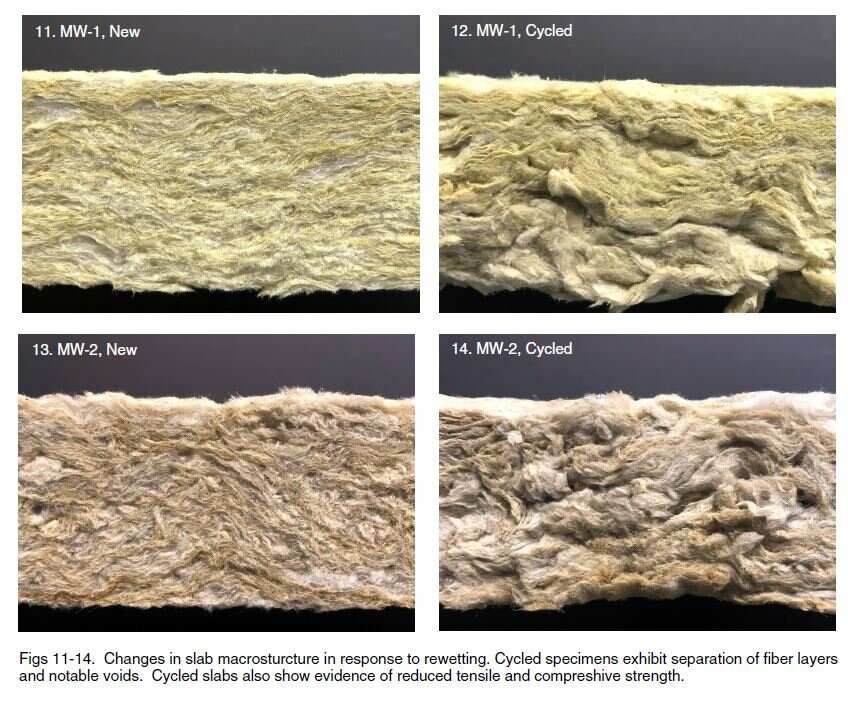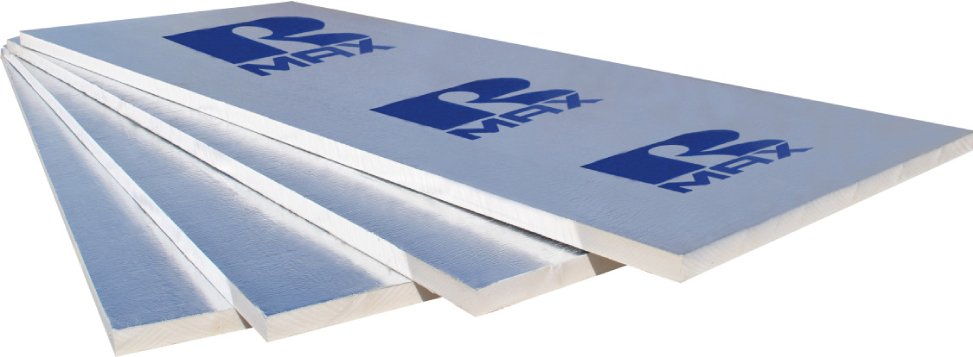Continuous insulation around the building envelope is becoming an accepted, and sometimes required, practice. Specifying and installing mineral wool insulation board is one way that builders can achieve continuous insulation. Let’s explore the pros and cons of this building insulation material.
What is Mineral Wool Insulation Board?
Mineral wool insulation board, commonly known as Rockwool, is a building material used in construction to insulate walls and attic spaces. The fibers that make up mineral wool insulation come from the minerals in volcanic rock and slag waste from steel production, that are spun and pressed together into board form. Mineral wool in board form is more rigid and dense than batts, another common form of mineral wool.
Mineral wool insulation boards come in various sizes and thicknesses, from 1” up to 5” thick. Standard sizes are limited to 24” modular increments, including:
24” x 48” (2’ x 4’)
24” x 72” (2’ x 6’)
24” x 96” (2’ x 8’)
48” x 96” (4’ x 8’)
Mineral wool insulation boards are often used in exterior wall applications where continuous insulation is desired. They are installed flush over a substrate like plywood and attached with nails and 3” washers.
Advantages of Mineral Wool Insulation Board
Mineral wool insulation board has several physical characteristics that make it desirable for use in building construction, including:
Natural fire-resistance
High sound absorbance
R-value of 4.2 per inch
Drawbacks of Mineral Wool Insulation Board
Mineral wool insulation board isn’t right for every application, however. Here are some of the problems with using mineral wool insulation boards in construction projects:
It’s Heavy
At 8 pounds per cubic foot, mineral wool insulation is dense and heavy, which makes it difficult to work with. A single 2” thick, 4’ x 8’ board weighs over 40 lbs.
The size and weight of mineral wool insulation boards present a challenge for installation without doubling labor. Often, one laborer is required to hold the sheet in place and another to secure it. The alternative is to purchase smaller sheets for easier handling, but this slows labor down by decreasing the coverage per sheet.
It’s Expensive
If you’re seeking the additional fireproofing and sound absorbance properties of mineral wool insulation, keep in mind that it will cost you more initially than standard fiberglass insulation. Expect to pay 25-50% more than fiberglass for the material, plus a higher installation cost.
Not for Custom Jobs
Mineral wool insulation boards are only produced in specific sizes and must be cut to fit around obstacles. If you have a custom job that requires irregular insulation shapes, mineral wool will make the job very difficult because there are fewer sizes available and the material does not conform to the cavity space, and must be cut on the job.
No Vapor Barrier
Some building insulation materials include a built-in vapor barrier facer. Mineral wool is not one of them since it is vapor permeable and is only available unfaced. With mineral wool insulation boards, a separate vapor barrier is required in order to keep moisture out of your walls and structure.
Requires a Nailable Substrate
Mineral wool insulation boards are designed to be installed over a flush substrate, such as weather-sealed plywood. That means that you’ll need additional furring strips over the top to attach your exterior finishes, like siding.
A Superior Alternative to Mineral Wool Insulation Boards
Polyiso insulation is another building material that is used in construction projects. It solves many of the challenges and downfalls of mineral wool insulation boards, including:
Higher R-Value: R6.0 per inch
Custom Facer: Polyiso adds a reflective or weather barrier option to the insulation board facer
Lightweight: Polyiso is very lightweight and easily handled by a single installer
Competitive Pricing: Polyiso is less expensive than mineral wool
Versatile Installation: Polyiso can be installed over multiple substrates or subgirts
Wall Insulation Board Options
Rmax specializes in manufacturing quality building insulation products. For your next construction project, consider the following superior polyiso products:
Durasheath®
Rmax Durasheath® is a polyiso building envelope insulation with inorganic polymer coated glass fiber mat facers on both sides. It’s ideal for exterior walls where a vapor barrier is not needed, such as stucco wall applications.
Thermasheath®
Rmax Thermasheath® offers the same polyiso core as Durasheath®, but with enhanced aluminum facers on both sides. Thermasheath® is an ideal building material for building envelope applications such as masonry and steel stud walls as well as below-grade applications where a moisture barrier is required.
Pick the Right Building Envelope Insulation with Rmax
At first glance, mineral wool insulation boards may seem like a great option, but it’s not right for every application. The experts at Rmax have been in the insulation industry for decades and can help you spot challenges before they become a problem.
Get help picking the right building materials for your next construction project. Our team can steer you in the right direction to make sure you’re getting all the design properties covered on the job.
Reach out to your Reach out to your local representative!




